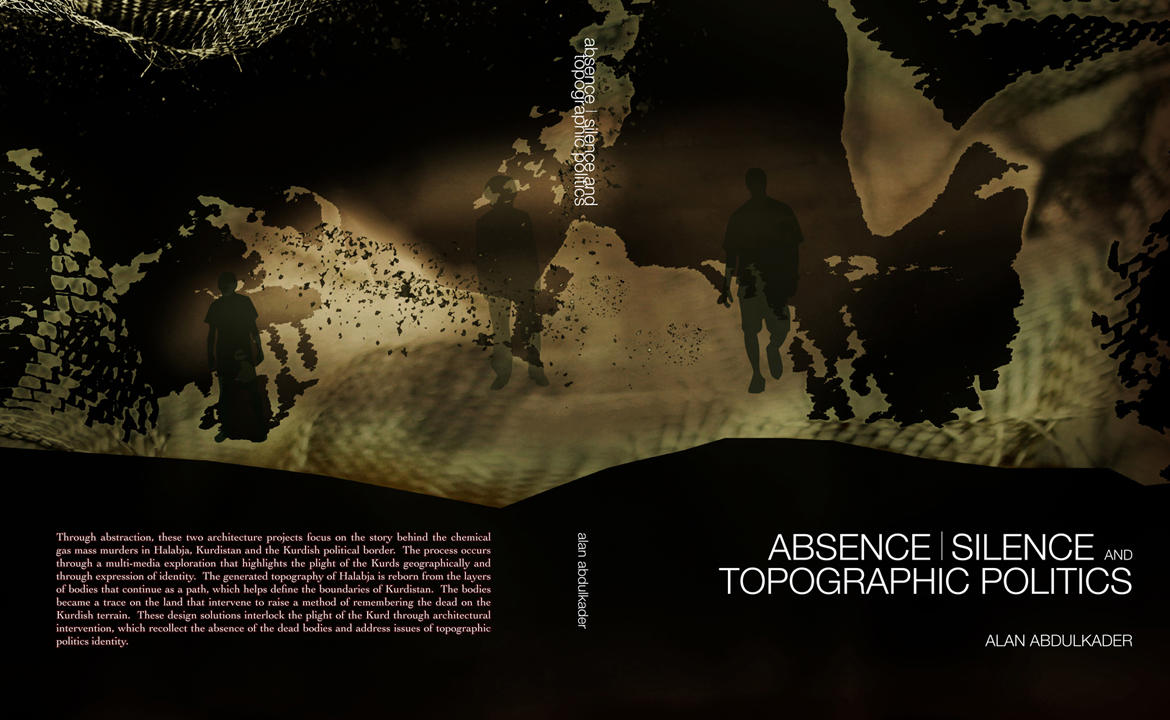Absence | Silence and Topographic Political examines the problems that the Kurds of North Iraq have faced. This project touches on two sensitive issues that many Kurds feel have been somewhat ignored internationally. The first one deals with the chemical gas bombs that were dropped over the city of Halabja by the former Iraqi government in March 16, 1988. This act of violence resulted in over five thousand deaths, with a total of twenty thousand affected. The second issue addresses the border tension between the Kurds and the Iraqi Government. Twenty-two years after this massive atrocity, there are few people who have been educated about this tragic moment and are still relatively unaware of the problems the Kurds and Kurdistan still face. The city of Halabja sets up the tone of my thesis and the Border will present the larger picture of geography and the political reasons behind it. The Kurds form the largest population in the world without a political border and are surrounded by Iraq, Iran, Turkey, Syria, and throughout the Georgia, Armenia and Kazakhstan regions.
With a current population of nearly forty million, the Kurds were the first people to settle the Middle East, and yet are now homeless in their own home and forbidden to speak their mother language by the radical regimes from the sur- rounding countries. Both of these two design solutions are interlocking the plight of the Kurds through architectural intervention which recollects the traces and the absence of the dead bodies. This study demonstrates that architecture reaches beyond the mass of a building; that it would become a source for that storytelling who transforms the ground surface to the underground, who transforms from a flat sandy region into a high to- pography. Architecture as a character shares the stories of the Kurds and defines the edge—returns to the notion of identity, marginalization, traces, deformation and geog- raphy.
